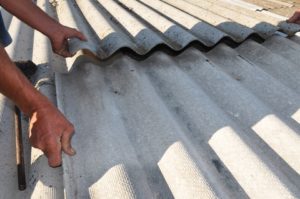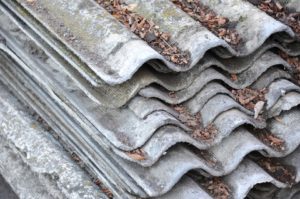Asbestos Cement Roofing Poses an Ongoing Risk for Mesothelioma
 Australian researchers have a warning for people in homes with asbestos cement roofing: Replace your roof or risk mesothelioma in the future.
Australian researchers have a warning for people in homes with asbestos cement roofing: Replace your roof or risk mesothelioma in the future.
Michael Kottek and Man Lee Yuen are with the Asbestos Diseases Research Institute in Sydney. They recently published a new report on the risk of mesothelioma from roof tiles made of asbestos.
Like all asbestos-containing products, asbestos cement roofing breaks down over time. Disintegrating or “friable” asbestos is the number one cause of deadly malignant mesothelioma worldwide.
Writing in the American Journal of Industrial Medicine, Kottek and Yuen say buildings with roofs made from asbestos pose an ongoing threat to occupants, even if the tiles are not disturbed.
Asbestos-Containing Products and Asbestos Cancer
There was a time when asbestos was considered a “miracle product”. This naturally-occurring mineral is strong, plentiful, inexpensive, and nearly impervious to heat and corrosion. In the early 1900s, manufacturers started adding asbestos to all sorts of home and commercial products.
It was especially popular in construction materials like floor and ceiling tiles, insulation, and asbestos cement roofing. Over time, people who manufactured, installed, repaired or renovated these construction products started getting sick.
By the 1960s, scientists knew that asbestos could cause a membrane cancer called malignant mesothelioma. When microscopic shards of asbestos enter the body, they never leave. In certain people, these irritating mineral fibers can trigger mesothelioma.
Unfortunately, many companies continued to use asbestos-containing products like asbestos cement roofing. Australia was an especially prolific producer and consumer of asbestos. Now, as buildings with these kinds of roofs get older, the risk for mesothelioma is rising.
The Danger of Asbestos Cement Roofing
The danger from asbestos comes from the fibers. If the fibers are contained, such as behind a wall in the form of insulation or glued down as floor tiles the risk for mesothelioma is minimal.
The problems develop when asbestos turns into dust. This can happen suddenly during a natural disaster or a renovation project. If asbestos cement roofing comes down suddenly, anyone in the vicinity who is not protected could be in danger. But wind, sun and water break down roof tiles over time and could pose the same risk.
For these reasons, the authors of the new report call these kinds of roofs a “public health risk”.
“Epidemiological studies have demonstrated a risk of disease associated with proximity to asbestos cement roofing (ACR), while ongoing environmental emissions of asbestos from installed ACR have also been demonstrated,” write Kottek and Yuen.
To be safe, the authors recommend that all new buildings use asbestos-free roofing and that existing ACR “should be removed at the earliest opportunity.”
If you are unsure if your home or building contains asbestos, contact an asbestos abatement professional for an assessment.
Source:
Kottek, M and Yuen, ML, “Public health risks from asbestos cement roofing”, December 28, 2021, American Journal of Industrial Medicine, Online ahead of print, https://onlinelibrary.wiley.com/doi/10.1002/ajim.23321






 Australian researchers have a warning for people in homes with asbestos cement roofing: Replace your roofing or risk mesothelioma in the future.
Australian researchers have a warning for people in homes with asbestos cement roofing: Replace your roofing or risk mesothelioma in the future.